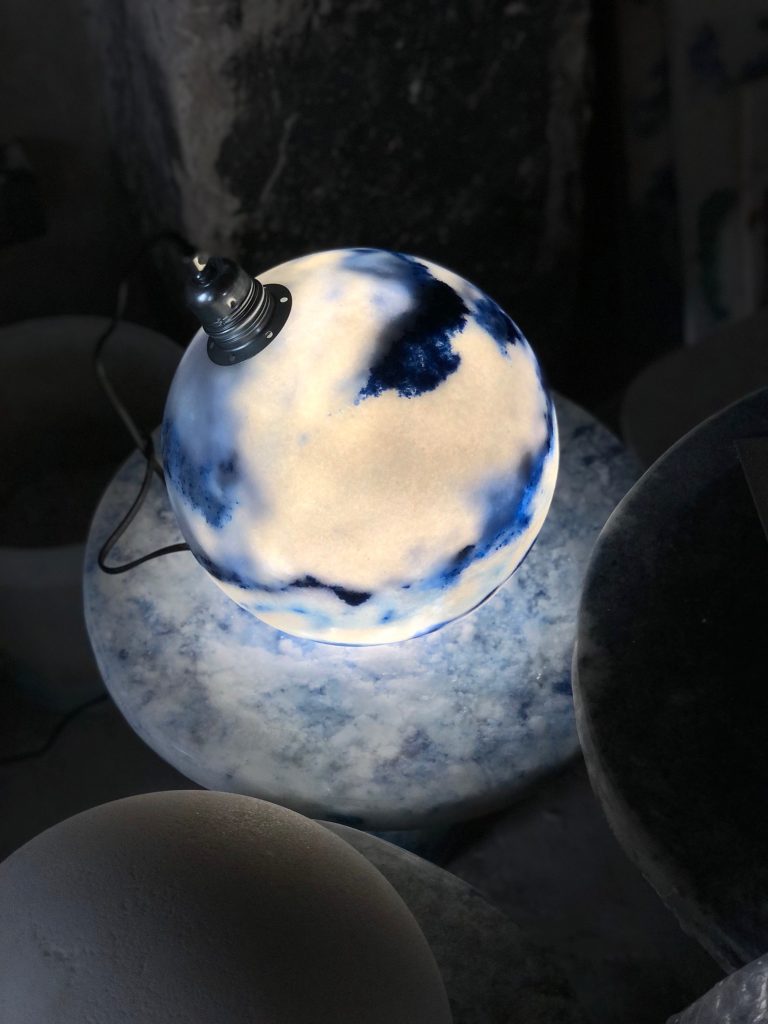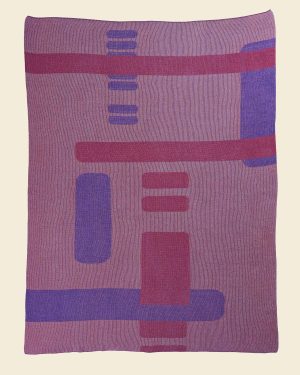

Objects of Affection: Sustainability & Our Relationships with Material Possessions
In 2024, the importance and priority of sustainability continue to rise steadily, capturing greater attention with each passing year. Within this evolving landscape, sustainability has become a guiding force, fundamentally reshaping how we think about, create, and interact with objects in design. While much attention has been rightly given to eco-friendly materials and production processes, there’s a deeper layer to sustainability that often goes unnoticed: our relationship with the objects themselves. This relational tie is crucial for long-term sustainability in the furniture, art, and decorative arts industries; it influences consumer habits and design discussions in subtle ways that affect our society’s attitude towards sustainability.
While recycling and the use of sustainable materials are undeniably important steps towards mitigating our environmental impact, they can be likened to band-aids addressing the symptoms of a larger issue: our substantial carbon footprint. A shift in focus towards our relationship with objects offers the potential for a more profound and enduring solution. By fostering a culture of mindfulness and intentionality in our consumption habits, we can cultivate a deeper appreciation for the objects in our lives, leading to reduced waste, increased longevity of products, and ultimately, a more sustainable way of living.


Nenka Tapestry




What does sustainable design mean?
Simply put: sustainability now encompasses both physical and philosophical dimensions. Sustainable design has evolved far beyond the simple notion of using recycled materials or biodegradable products. It now demands a comprehensive reimagining, expanding its scope to encompass a holistic philosophy guiding every facet of our existence. It’s imperative to expand our conception of sustainability beyond mere physical attributes and technical practices.
Sustainability should be embraced as a guiding ethos—a philosophy to be honored and upheld in every aspect of our lives. It is no longer simply a consideration when choosing between products packaged in plastic or glass; but now a holistic principle that encompasses our entire relationship with the material world. If we aspire to achieve true circular, closed-loop production systems, we must envision ourselves as integral components of that loop, alongside the objects we create and interact with. Our ethos and relationships with these objects are just as vital as the objects themselves in realizing a sustainable future.




How does sustainability shape our relationship with objects?
Central to the ethos of sustainable design is our intimate relationship with the objects that punctuate our daily lives. Our connection to these objects extends beyond their physical properties. It encompasses the stories they hold, the memories they evoke, and the emotions they stir within us. These relationships influence how we perceive, value, and ultimately engage with the material world around us.
By fostering meaningful connections with the objects in our lives, we can cultivate a deeper sense of appreciation and stewardship. We come to recognize the inherent worth of each item, not just in terms of its practical utility or aesthetic appeal, but also because of the meaningful experiences and emotions it embodies. This shift in perspective towards our belongings can lead to more mindful consumption habits. Rather than viewing objects as disposable commodities, we start to see them as cherished companions on our journey through life. We become more conscious of the resources and energy invested in their creation, and more inclined to treat them with care and respect.
In essence, nurturing a profound relationship with the objects in our lives is not only personally enriching but also essential for fostering a more sustainable relationship with the material world. It encourages us to consume less, choose more thoughtfully, and ultimately live in harmony with the planet and each other.






See More Like This: Visit Our Online Gallery of Sustainable Lighting
How does sustainability relate to longevity in design?
Designing products for longevity poses a significant challenge in today’s world, where we are bombarded by advertisements and the unprecedented pace of the trend cycle. Consumer culture often promotes the constant pursuit of the latest styles and aesthetics, leading to a culture of disposability. Moreover, fast fashion and planned obsolescence have normalized the idea of replacing items frequently rather than investing in quality and durability.
This pressure to constantly upgrade and keep pace with trends can undermine efforts to create long-lasting products. It requires a shift in mindset both from consumers, who need to prioritize quality over quantity, and from designers and manufacturers, who must resist the pressure to constantly churn out new products to meet fleeting and impetuous demands. Overcoming these challenges requires a concerted effort to educate consumers about the benefits of longevity and to incentivize sustainable design practices throughout the industry.
Rather than following transient trends and using disposable materials, sustainable designers focus on timeless, often minimalist aesthetics and durable craftsmanship. By selecting high-quality materials and construction techniques, furniture and decor can endure, reducing the need for replacements and minimizing waste. Embracing timeless design principles also ensures that these objects remain relevant and desirable for years to come, further extending their lifespan.




How does heritage and tradition support sustainability?
Incorporating elements of heritage and tradition into design not only enriches the depth and richness of products but also advances sustainability by nurturing ties to the past and instilling a commitment to preserving our cultural legacy. Take, for instance, the cultural significance of heirloom quilts. Painstakingly crafted over generations, these quilts carry legacies of resourcefulness, often pieced together from leftover materials.
Beyond their functional utility, these quilts serve as tangible embodiments of familial history, revealing tales of love, resilience, and ingenuity. It’s a beautiful thought to consider how quilts, with their warmth and security, have protected generations from the cold. When we hold gratitude towards these quilts for providing comfort and shelter, we feel indebted to them and understand the importance of safeguarding them in turn so they can also continue to ‘live’ and last for future generations.
Similarly, in contemporary design, we see a resurgence of interest in artisanal practices and indigenous craftsmanship. For example, furniture designers may draw inspiration from ancient woodworking techniques to create timeless pieces that reflect both cultural heritage and sustainable principles. By sourcing locally abundant materials and employing age-old methods of construction, these designers pay homage to tradition while also minimizing their environmental footprint.
Moreover, traditional craftsmanship often embodies a spirit of resourcefulness and ingenuity, leading to the creation of durable, long-lasting products. By integrating these elements of heritage and tradition into design, we not only honor and remember ancestral wisdom but also create products imbued with meaning and longevity and instill a sense of responsibility towards preserving these traditions for future generations.
How does promoting repair and upcycling support sustainability?
In a throwaway culture where obsolescence is often built into products, promoting repair and upcycling becomes imperative for encouraging sustainability. Designers play a pivotal role by integrating modular design principles, interchangeable parts, and easily repairable components into their products. This approach may empower users to extend the lifespan of their possessions through maintenance and repairs, reducing the need for frequent replacements and minimizing waste.
Furthermore, as consumerism has surged, there’s been a parallel rise in discontentment with its effects on the environment and society. Consequently, there’s been a resurgence of interest in DIY practices and “lost” arts like sewing and knitting. People are embracing the value of repairing and repurposing items themselves, reconnecting with traditional skills and reclaiming agency over their belongings.
In this evolving landscape, designers have an opportunity to tap into this renewed interest in sustainability and resourcefulness. By facilitating repair and upcycling, they not only mitigate the environmental impact of consumer culture but also offer a sense of empowerment and connection to the objects we own. Encouraging users to repair, repurpose, and reimagine their possessions not only reduces waste but also cultivates a culture of conscious consumption and appreciation for craftsmanship.






Three sustainability considerations in design beyond recycling:
Flat-Packing for Efficiency:
Flat-packing has emerged as a sustainable solution for reducing transportation costs and carbon emissions in the furniture industry. By designing products that can be efficiently packed into flat packages, manufacturers can minimize wasted space during shipping and distribution, resulting in fewer truckloads and reduced fuel consumption. Flat-packed furniture also tends to require less packaging material, further reducing its environmental footprint. Additionally, flat-packed products are often designed for easy assembly, empowering users to participate in the creation process and develop a deeper connection with their furniture.




Multifunctional Design for Space & Use Optimization:
Multifunctional design is another key strategy for promoting sustainability in furniture and decor. By creating products that serve multiple purposes or adapt to different spatial configurations, designers can maximize the utility of each object, reducing the need for excess furniture and clutter. From convertible sofas that double as guest beds to modular storage systems that can be customized to fit any space, multifunctional design encourages versatility and adaptability in living environments. By optimizing space usage and minimizing waste, multifunctional design contributes to a more sustainable and efficient way of living.




Biomaterials:
Intriguing biomaterials, including mycelium from mushrooms, algae-based plastics, biodegradable polymers derived from agricultural waste, and textiles made from pineapple or citrus fibers, are reshaping sustainable design practices. These innovative materials leverage natural resources in novel ways, offering biodegradability, low environmental impact, and versatility in applications. Mycelium, for instance, can be grown into dense, durable materials that mimic the properties of traditional plastics and foams, offering a renewable alternative.
Similarly, algae-based plastics utilize photosynthesis to convert carbon dioxide into bioplastics, reducing greenhouse gas emissions. Biodegradable polymers sourced from agricultural byproducts like corn or sugarcane offer a renewable alternative to traditional plastics, decreasing dependence on fossil fuels. Textiles crafted from pineapple or citrus fibers utilize waste from agricultural industries, repurposing materials that would otherwise be discarded. By exploring these diverse biomaterials, designers can create products that are not only environmentally friendly but also push the boundaries of sustainable innovation.




What’s next?
Central to reshaping our relationship with objects is consumer education. By raising awareness about the environmental and social impacts of consumer choices, individuals can make more informed decisions and actively contribute to a more sustainable future. Designers, manufacturers, and retailers play a crucial role in educating consumers about the sustainability attributes of their products, from eco-friendly materials to responsible production practices. By highlighting the benefits of durable, timeless design and promoting repair, upcycling, and multifunctionality, consumers can make choices that align with their values and contribute to a more sustainable and resilient society.
As we strive to create a more sustainable future, our relationship with objects plays a critical role in shaping consumption patterns and driving positive change. By designing products that foster emotional connections, promote longevity, and embrace sustainability principles, designers can inspire meaningful interactions and encourage responsible consumption behaviors. From flat-packed furniture that reduces transportation emissions to multifunctional designs that optimize space usage, every aspect of design has the potential to make a difference. By embracing sustainability as a guiding principle and prioritizing the well-being of people and the planet, we can create a world where design not only enhances our lives but also protects the environment for future generations.




Read Now: Onwards & Upcycled: Crafting New from Old
-

 Cast-iron Bracket Rack€1.875
Cast-iron Bracket Rack€1.875 -

 Frankenstein’s Bag€688 incl. tax
Frankenstein’s Bag€688 incl. tax -

 Geometric Wool & Cotton Blanket€188 incl. tax
Geometric Wool & Cotton Blanket€188 incl. tax -

 Geometric Wool & Cotton Blanket€188 incl. tax
Geometric Wool & Cotton Blanket€188 incl. tax -

 Giria Flower Lamp€1.300
Giria Flower Lamp€1.300 -

 L’intervalle “l” / Shelving Unit // Reimagined Textile€9.104 incl. tax
L’intervalle “l” / Shelving Unit // Reimagined Textile€9.104 incl. tax -

 Le Nomade / Side Table // Reimagined Textile€413 incl. tax
Le Nomade / Side Table // Reimagined Textile€413 incl. tax -

 Le Plot / Stool // Reimagined Textile€1.188 incl. tax
Le Plot / Stool // Reimagined Textile€1.188 incl. tax -

 Le Rebond / Low Stool // Reimagined Textile€840 incl. tax
Le Rebond / Low Stool // Reimagined Textile€840 incl. tax






